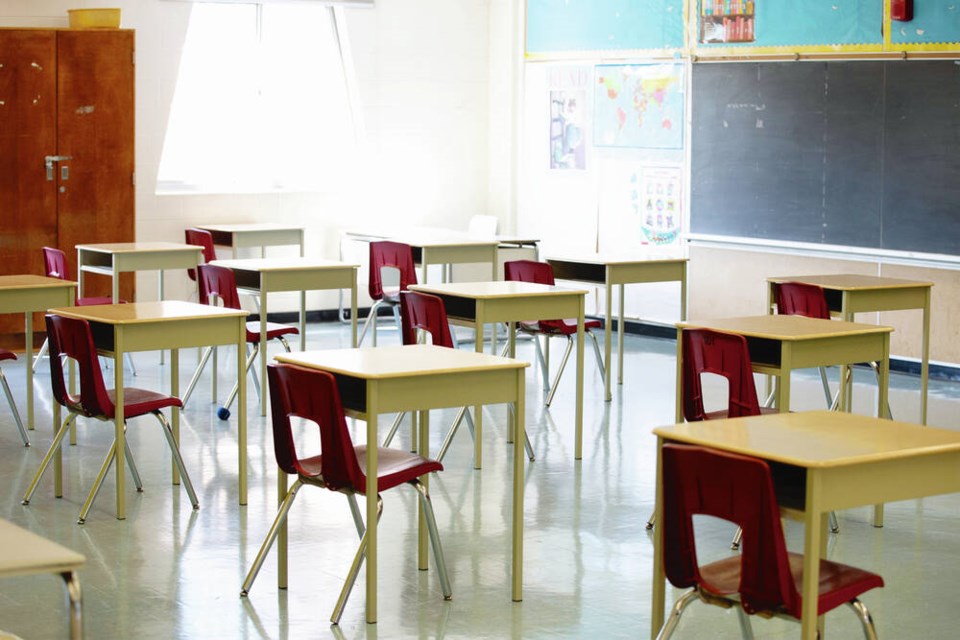It may be time for an updated look at public education in B.C., examining what has changed in B.C.’s school districts and classrooms since the July 15, 1988, Sullivan Commission report.
It’s 34 years since Commissioner Barry Sullivan travelled across B.C., and held 66 public hearings and 54 meetings with teachers, and took part in 23 student assemblies.
All told, Sullivan wrote in his report — called A Legacy for Learners: Report of the Royal Commission on Education — the commission received almost 2,350 written and oral submissions from individuals and groups all over the province.
That’s a pretty fair sampling of opinion about the direction in which those who participated hoped public education would be heading.
So what happened?
While it does not seem necessary to organize another Royal Commission, nobody — including those of us who lived through the whole process — could have guessed how much the delivery of public education would change over those 34 years.
As just one example, many classrooms in B.C. and across Canada today are equipped with some type of electronic screen as well as smartboards, iPads, desktop computers, smartphones and online access.
From inner-city schools to those in rural and remote towns, we have accepted technology in the classroom as a necessary and beneficial evolution in education.
And yet influential voices are now asking whether public education jumped onto the technology-revolution bus too quickly, while ignoring the less glitzy implications of other recommendations from the Sullivan report.
The Organisation for Economic Co-operation and Development said in a 2015 report that students who use computers very frequently in the classroom “do a lot worse in most learning outcomes,” and that “in the end technology can amplify great teaching but great technology cannot replace poor teaching.”
The OECD report, called Students, Computers and Learning: Making the Connection, examines how student use of information and communication technology devices has progressed, and how schools are struggling to integrate the rapidly changing nature of technology into student learning.
Based on 2012 results from PISA, OECD’s Programme for International Student Assessment, the report discussed differences in access to and uses of technology in teaching and learning. Some of these differences are related to socioeconomic status, gender and even geographic location.
Here in B.C., these differences have been magnified by the impact of COVID 19 on the school system.
The report highlights the importance of preparing children to learn to navigate their way through digital information. The report makes clear that all students need to be equipped with basic literacy and numeracy skills so they can participate fully in the hyper-connected, digitized world of the 21st century.
When the Carnegie Endowment for International Peace gathered 84 proposals from 51 organizations exploring how to overcome online misinformation, the most frequently recommended action was to raise the the digital literacy of those who consume that information.
But back to the Sullivan report. Perhaps the clearest theme, and one that has yet to be fully realized, was that no two learners, not even identical twins, are identical in their learning needs.
The Education Ministry’s “Year 2000” document, which emerged in response to the Sullivan report, identified several other influential themes that had major implications for the organization of teaching and learning.
The ministry document said, among other things, that individual learning requires the active participation of the learner, that students learn in a variety of ways and at different rates, and that learning is both an individual and a social process.
Those precepts, widely accepted by many experienced educators but rejected by some non-educators for a variety of reasons, had the potential to have a major impact on the delivery of public education.
They should have influenced the architectural design of schools, programs for teacher preparation, the integration of curriculum, student assessment and self-assessment practices, and the need to properly accommodate kids at either end of the intellectual and ability spectrum.
While there is no doubt that individual school districts have attempted to incorporate some aspects of the Year 2000 recommendations, the system as a whole has been slow to respond.
In some cases, individual districts or schools were successful; in other cases, the attempts were “small p” politicized and were abandoned.
What is overdue in 2022 is some scholarly examination of what changed or did not change as a result of the Sullivan Commission.
Geoff Johnson is a former superintendent of schools



